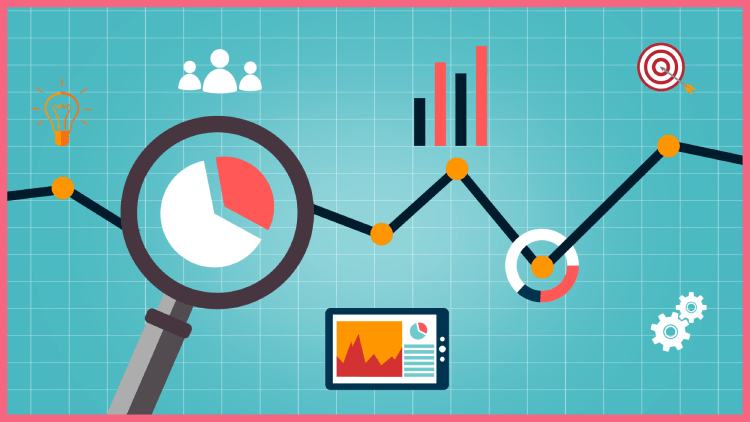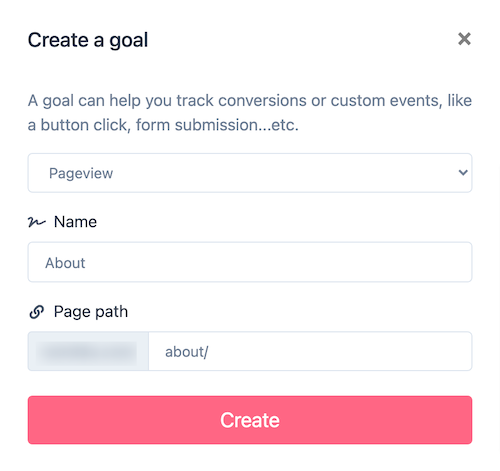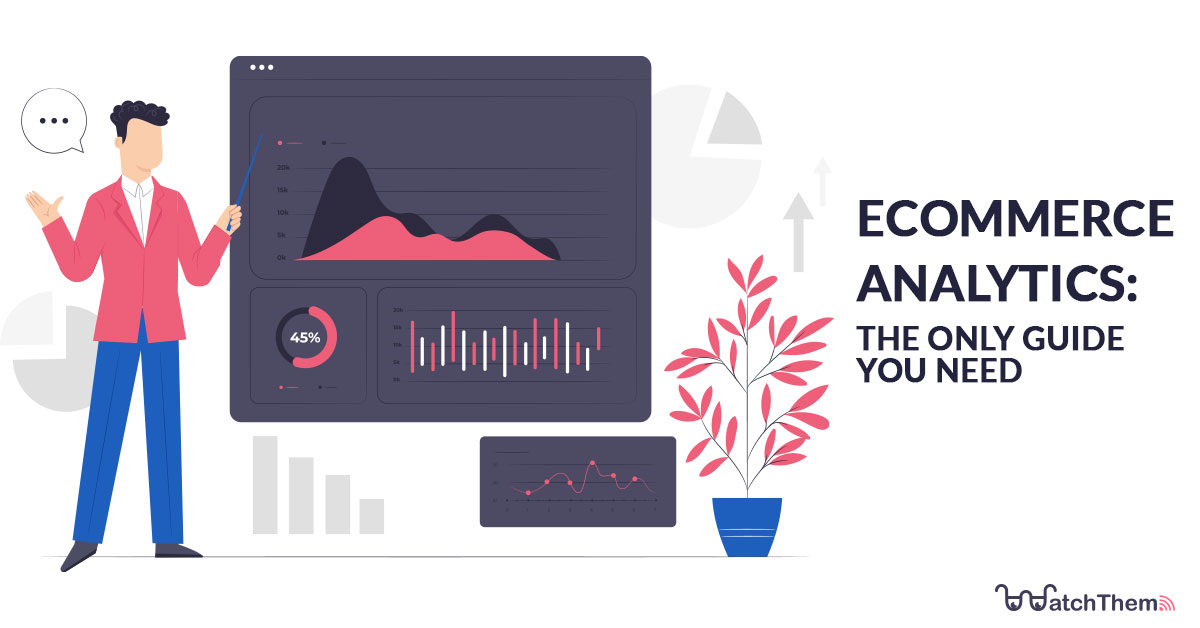Page Contents
Customers are the most important and also the most powerful element in eCommerce. They compare different stores and consider other customers’ reviews. Then they decide which store to choose based on their expectations and how each one meets them.
Customers’ expectations are high. The only way for you to win the competition is to offer them a flawless experience. To enhance your customer experience, the only thing you need is data. But how can we use data to make changes and improve anything? This is where eCommerce analytics comes into play. If you want to learn how to interpret your data and information and use it to make the right decisions in your business, this article is for you.
WatchThemLive is a perfect tool to help you gather useful information about your customer behavior. The data WatchThemLive provides you with helps you optimize your website and give your visitors the best experience possible. SIGN UP for FREE right now!
What Is eCommerce Analytics?
eCommerce analytics is the process through which you gather all types of data that can influence your online store and use it to understand how your users’ behavior is changing. Then you use this data to make the correct type of changes to increase your sales.
The process of eCommerce analysis covers the entire journey a customer experiences, starting from discovery, acquisition, and conversion, all the way to retention and advocacy.
Why Is Analytics Important in eCommerce?
Consumer demands are increasing every day, and technological innovations are evolving non-stop. These changes lead to growth in eCommerce sales all around the globe. According to statistics, business-to-consumer eCommerce grew by 215% globally from 2015 to 2021, and it is expected to expand by 10% in 2022.
The only path to success in this vast market is to build a profound understanding of your consumers, and this is only possible through gathering data and analyzing it.
Due to the coronavirus pandemic, eCommerce has experienced tremendous growth in the last couple of years. The impact of this significant shift will stay with us, and its positive influence on eCommerce will undoubtedly continue. If you want to take advantage of this increase in the popularity of online purchases, you should prioritize eCommerce analytics.
Most Important Areas of eCommerce Metrics
One of the most common mistakes online retailers make when it comes to eCommerce metrics is that they get overwhelmed by a large amount of information they think they are supposed to gather. That is why most of them base their decisions on their intuition rather than factual information.


Of course, the number of metrics is enormous, but what you need at first are only the essential ones. We’ll divide the most significant eCommerce indicators into five pillars that span the whole customer lifecycle to keep things simple and straightforward:
1. Discovery
As a business owner, the first thing to do is create awareness and lead your audience to your eCommerce website. Tools such as WatchThemLive Analytics make qualitative data analysis possible and provide tangible results. You can use the user tracking feature on WatchThemLive to create user personas. With this feature you can see your visitors’ information such as their country, device, average time per session, etc. and watch each user’s journey through your website with the smallest details. By analyzing your users’ behavior you can come up with realistic user personas.
Get instant access to WatchThemLive now!
Keep in mind that besides these basic metrics, you should pay attention to email and social media engagement metrics as well:
Reach
This is the number of people who have received your email or have come across your content on social media. To increase the number of your followers and subscribers, it’s important to have advertising campaigns regularly to reach more people.
Impressions
This is the number of times that people have seen your content. The number of impressions is always higher than the number of reaches because reach is about unique individuals who have come across your content, but in the case of impression, one individual can have more than one impression for only one post.
Engagement
Another important measure is the number of people who engage with your content, such as followers and subscribers. Receiving likes and shares is the ultimate aim of connecting with customers across platforms.
2. Acquisition
The next step is measuring the number of customers who visited your website and their acquisition cost.
All your effort and money is worth it If you can successfully lead visitors to your store. Using eCommerce analytics tools that WatchThemLive offers, you can see an overview of the performance of different channels and goal conversion rates.


Here are some essential metrics related to customer acquisition:
Click-through rate (CTR): The percentage of people that click on a given link in comparison to the overall number of users who see an email or social media post


Cost per lead (CPL): The average cost of generating new business leads


Cost per acquisition (CPA): The average cost of acquiring a customer


3. Conversion
After bringing visitors to your website, you should try and convert them into customers. Not everyone who opens your web page will click the add to cart button, and even if they do, they may change their mind and leave.
The following conversion metrics enable you to keep track of your eCommerce data and optimize your user experience:
Sales conversion rate: The percentage of visitors who make a purchase


Average order value (AOV): The average amount of money that one customer spends in your store


Cart abandonment rate: The percentage of shoppers who add products to the shopping cart but leave your website before completing the transaction


Recommended Reading: eCommerce Conversion Rate Optimization: 5 Tips to Boost Sales
4. Retention
Loyal customers are so valuable to a business. Remember that retaining existing customers takes much less money and effort than finding new ones.
These metrics help you measure customer retention:
Customer lifetime value (CLV): The total amount of money a customer is anticipated to spend in your business during their lifetime


ACL = Total customer lifespans / Number of customers
CV = Average purchase value (APV) / Average purchase frequency rate (APFR)
APV = Total revenue / Number of orders
APFR = Number of purchases / Number of customers
Customer retention rate vs. churn rate: Customer retention is the percentage of customers the company has retained over a given time, while the churn rate is the percentage of customers a company has lost over that specific period.


5. Advocacy
If you progress to this stage, you have customers that are more than just regular shoppers. They’re the face of your company. They like your items so much that they’re telling their friends and family about them. Still, this step of the client lifecycle is usually ignored, which is a big mistake. The ability to recognize and act on the metrics from this pillar is what separates an ordinary eCommerce business from a successful one.
Net promoter score (NPS): It enables you to measure how willing your customers are to recommend you to the people they know.
Using this data, you can put your customers in three categories:
- Promoters: Your loyal customers
- Passives: Customers who are satisfied with you but not enough to recommend you to others
- Detractors: Dissatisfied customers who not only will not buy from you again, but they are likely to discourage others from doing so


eCommerce Analytics Benefits
Now that we know what eCommerce analytics is and why it’s important, let’s discuss a number of its benefits.
1. Evaluating the Effectiveness of Your Marketing Strategies
You can use data analytics to measure the success of your marketing activities and improve your decision-making.
2. Finding Patterns and Forming Accurate Anticipations
eCommerce analytics enable you to understand better how your business is currently operating and how it is likely to perform in the future. Everything will be clean-cut using analytics: from recruitment and sales goals to ensuring that the correct items are available at the right time to meet your consumers’ expectations.
3. Optimizing Pricing, Upselling, and Inventory Performance
Using eCommerce analytics, you’ll be able to take a close look at what drives the price for each customer group. You may utilize this knowledge to find the greatest pricing points at product level rather than at category level, allowing you to maximize income.
4. Using Your Customer Data and Personalizing Their Experiences
Understanding your consumers’ interactions with your company is critical in determining which formats, content, and channels they will find more appealing. eCommerce data analytics can help you position your items more effectively and enhance your consumers’ shopping experience.
Recommended Reading: Website Personalization: The Best 4 Strategies to Win Customers


How Are Analytics, Metrics, and KPIs Different from Eachother?
These are concepts related to each other and should be used in correlation to achieve helpful information and make the best decisions for the future of your business. This connection makes many people mistake these terms for each other, but you should know that each is different from the others and has its unique usage.
Let’s take a look at a brief definition of each one:
Analytics: A process through which we gather all the data that can affect our business, analyze it, and then use it to improve our performance.
Metric: A measurement of website performance that is quantifiable (e.g., conversion rate, bounce rate, etc.)
KPI: It’s short for ‘key performance indicator.’ They show how successful your business has been in different areas such as sales, customer retention, etc.
4 eCommerce Analytics Best Practices
At this point, you are familiar with the definition of eCommerce analytics and have adequate information about the process and the variables. Now it’s time to learn a number of practices in analytics to go through the process in the most efficient way.
1. Gather All of Your Data in One Place
You may use various eCommerce platforms to store your data. Having your business data in different places and analyzing them separately can be a real pain in the neck. So what you will try to do is gather all of your data in one place. This way, it’s easier for you to see the big picture and analyze each piece of information regarding any other data you have gathered.
One other thing that you should have in mind about this process is that the amount of information you are provided with can be huge, and gathering all of them manually in one place can be very time-consuming and overwhelming. This is why you consider using pre-built data connectors. They are made to automatically get data from all sources with the information you need and merge them in Excel, Google Sheets, etc.
2. Know What You Need to Do With Your Data
Be careful! There must be a purpose in gathering all of this information. If you don’t know what you should do with the data you have, you might have just wasted all of the time, money, and effort you put into the process. Connecting the numbers and statistics with your users’ behavior and analyzing their correlation makes the eCommerce data valuable.
Looking at each number in isolation is highly misleading, and it can lead to lots of wrong decisions. So you should remember to expand your outlook when thinking about numerics and see them in relation to each other. Having all of your data in one place can be of great use in this phase as well.
3. Adjust Yourself with the Data
By paying attention to numbers and statistics, you can find out which of your products, categories, or campaigns are generating more revenue and which ones are not as profitable as they were expected to be. Knowing this, you can accentuate the successful approaches and provide more popular items, and make corrections in your less successful activities.
4. Adjust Yourself with the Changes
The industry is always in perpetual change, and you need to keep yourself updated to remain in the competition. One of the most important areas in which these changes happen is SEO. So you should keep tracking the new trends in different areas, especially SEO, and adapt yourself to them.
Conclusion
In this article, we defined eCommerce analytics and mentioned some of its important impacts on a business. We also introduced the areas of eCommerce metrics and explained the most essential metrics in each of them. And finally, some eCommerce analytics benefits and best practices were mentioned and discussed.
Now you have enough information to dive straight into this vast field, learn more, and apply it to your eCommerce business. Using eCommerce analytics, you can formulate your way into success and make decisions more carefully.
WatchThemLive provides you with seamless analytic tools to track your website activity. SIGN UP for FREE and get started.


